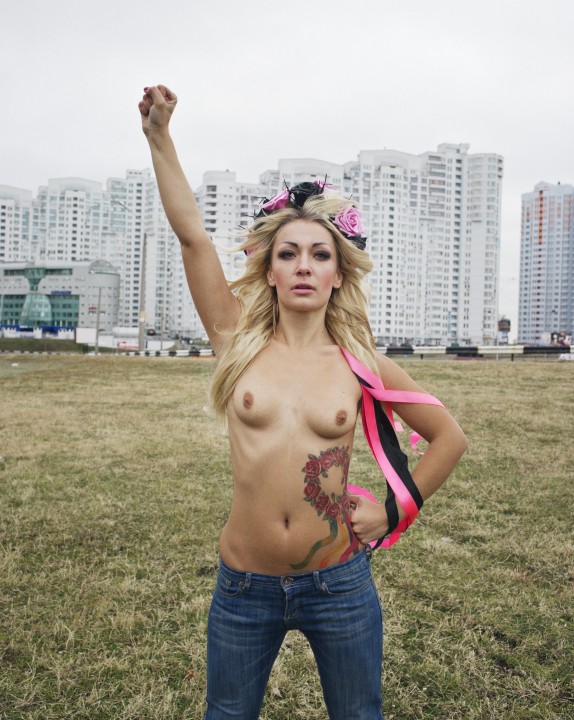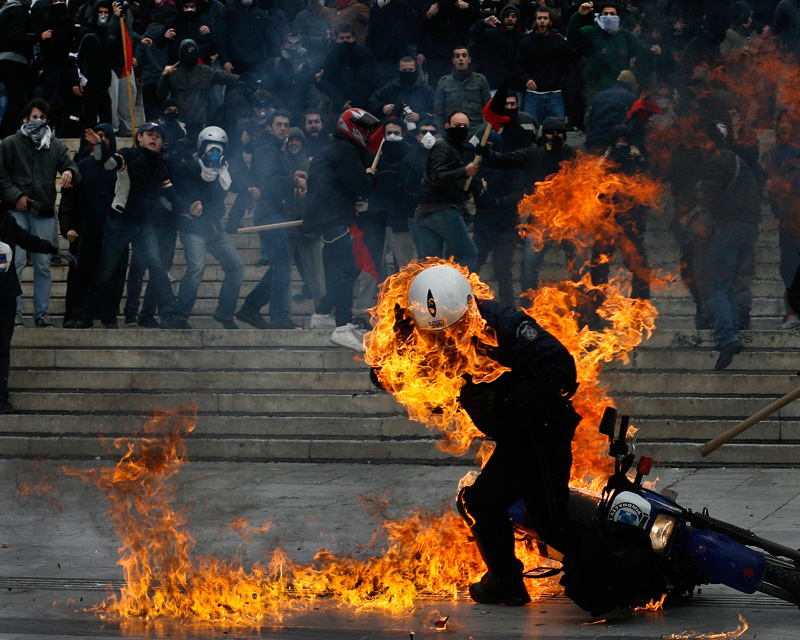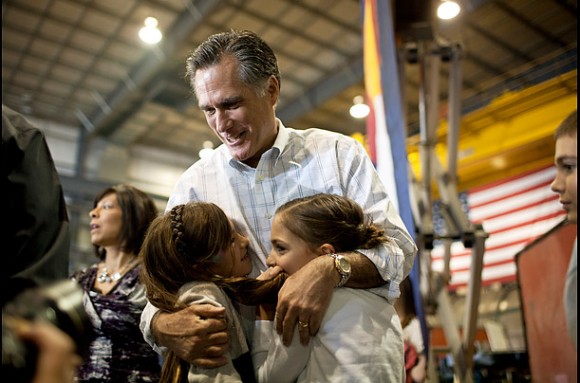Notes
How To Look at a Woman's Body: World Press Photo and the New Amazons
This photo, recognized on Friday with a World Press Photo award, is bound to grab attention, as breasts often do, and the Ukranian feminist group, FEMEN, clearly plays to that reaction. Considering the relentless sexualization of female bodies, however, the photo provides a more complex presentation of the exposed female torso.
When female breasts are commonly fetishized in public imagery in the name of titillation, though (the British tabloid, The Sun, prints a topless woman on page 3 every day), can any single act of protest actually hope to subvert the misogyny and objectification inherent in such ‘exposure’?
Here’s how Inna Shevchenko, one of the leaders of FEMEN, and by proxy, photographer Guillaume Herbaut (winner of World Press Photo’s second prize in the portrait category) attempt to do so:
The Stance: Shevchenko’s pose, with the raised fist, speaks of her mission to teach women to be more assertive. The figure of the ‘Amazonian’ is a central reference FEMEN utilizes. If the identification is to the “other,” suggesting the marginalization these women feel, it also points to ‘Amazonians,’ in the cultural imagination, as a matriarchal tribe made up of fearsome and fearless women.
The Headdress and Tattoo: The headdress is another a reference to the Amazonians, as well as political protest as public theater. This actual garland and brightly coloured ribbons also suggest femininity, something which the group is keen to display in contrast to some feminist groups in the past. As for the garland tattoo, it shows how Shevchenko’s cause is so essential it is physically mapped to her, her body as both cause and message. The strategy overall involves the reversal of signs: if femininity is seen to equal weakness and vulnerability, Shevchenko and FEMEN demand that it equal strength. What could be the crown of a beauty queen is willed to equal the headdress of a tribal warrior.
The Location: Shevchenko is depicted in open grassland on the edge of what seems to be a cluster of Soviet-style apartment blocks. This speaks of marginalization as well as the groups Ukrainian and urban environment. The grassy field upon which Shevchenko stands is another clever double symbol representing both marginalization and pastoral freedom. It reveals a dream of an Eden, a renewed innocence directed at and by the female body in contrast to the body’s exploitation by mainstream culture.
What this portrait also tells us is that, exposed or hidden, women’s bodies are a hot topic. (I mean, see all the worry over the fact that the woman in the World Press winning photo is wearing a burkha).Veiled or on display, the female body is defined by sexuality in a way that male bodies are not. (It is worth pointing out that if a man walked down the street topless he would not get arrested, and neither would he attract much extra attention at a protest). With this simultaneously innocent and knowing revelation of the female torso, I think Shevchenko is also asking us to realize how “exposed” or “hidden” are false distinction — that it is the human form and, as such, represents identity, physicality and power.
Whether every audience can be sophisticated enough to understand the turning around of signs; the ways in which ‘weak’ is made ‘powerful’, ‘victim’ is made ‘fighter’, is a difficult problem. (Karrin Anderson’s piece for BagNews, about the photo of the woman protester in Egypt stripped by the military, also notes that these signs should be reversed when she writes, “Don’t go to battle for her. Go to battle with her.”)
FEMEN considers it a risk worth taking to draw attention to the problems women face in their society. This picture as a photographic object must undergo the same difficult process of interpretation – is it a kind of pornography or a protest item that raises the awareness of FEMEN’s cause? It is highly reliant on context. But in a world where the female body is so often appropriated by others, especially by visual media, it’s also FEMEN’s statement and demand to use their bodies as visual tools to further the cause of equality.
A body to protect a body is a courageous act.
— Madeleine Corcoran
(photo: Guillaume Herbaut. caption: THE NEW AMAZONS. 13 October 2011. Inna Shevchenko, 21, is one of the leaders of Femen. The feminist Ukrainian protest group organizes topless protests against sex tourists, sexism and social problems.)



Reactions
Comments Powered by Disqus